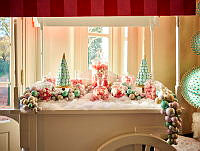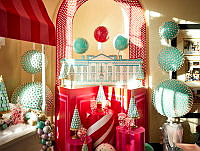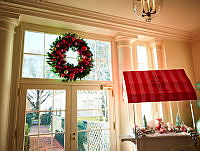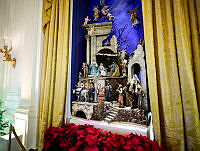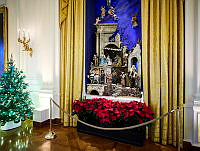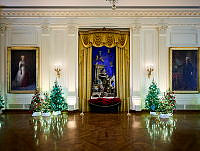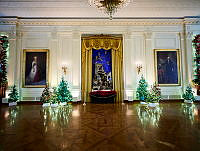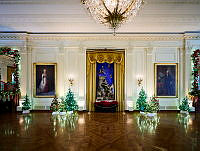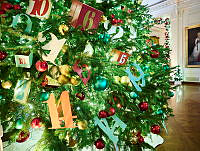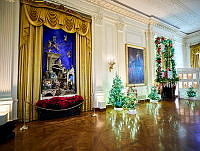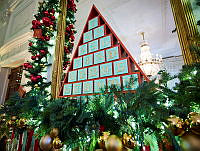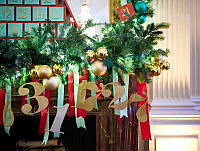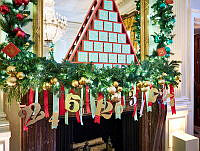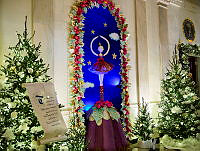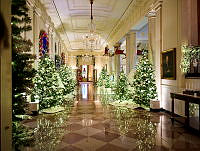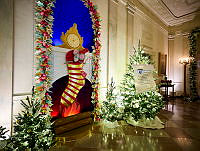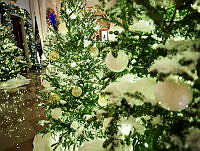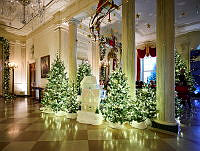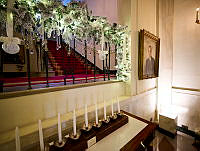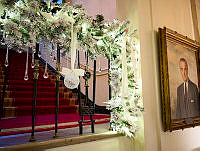An Essay on "A Vision Takes Form" by Peter Waddell
The White House Under Construction, 1796
Copyright © White House Historical Association. All rights reserved under international copyright conventions. No part of this article may be reproduced or utilized in any form or by any means, electronic or mechanical, including photocopying, recording, or by any information storage and retrieval system, without permission in writing from the publisher. Requests for reprint permissions should be addressed to books@whha.org

Peter Waddell, A Vision Takes Form, oil on canvas.
Peter Waddell for the White House Historical AssociationAt this stage in the construction of the White House, 1796, the walls are rising above the second floor level. They are half way to completion. People were now beginning to see how extensive the house was to be, and they must have looked on in wonder. Larger than a statehouse and taller than most church steeples, it would have loomed above any American town of its time.
The perspective Waddell has selected is not entirely imaginary. Although it takes our eyes higher than the trees, which provided the tallest prospects around, it approximates carefully what we might have seen from a hot air balloon, that fanciful contraption introduced to Europe less than a decade before. From this useful position we see the entire construction of the White House in process. The artist has reviewed the original building receipts and contracts of the architect James Hoban (to whom President George Washington entrusted the design and construction), the brickmason Jeremiah Kale, and the stonemason Collen Williamson. None of the three, nor most builders on the job, were born in America.
From where we view the structure, the succession of rooms begins with the largest, the East Room, beneath your feet, across the parlors, Green and Red, climaxed by the oval Blue Room between them, and on to the State Dining Room. The big space with the crane in the center is the Entrance Hall. When the house was completed, not a single brick would show.
The character of construction was not different from that common in the monumental buildings in Europe two centuries before it, be they cathedrals, private houses, palaces, or civic structures. Stone was the most precious and admired of all building materials. Being costly to quarry, transport, and dress, it was used sparingly, thus, as the painting shows, the White House had outer walls of stone, backed with thick layers of cheaper soft brick. Protected from the weather, the brick stabilized the stone walls and, molded on the site, trimmed costs dramatically. The painting shows how construction at that time was self-supporting, stone laid upon stone, brick upon brick, timber pinned to timber with pegs. Except for the stone walls, this would be replaced when the contents of the historic stone shell were replaced with modern materials 150 years later, when the White House was rebuilt in structural steel and concrete.













